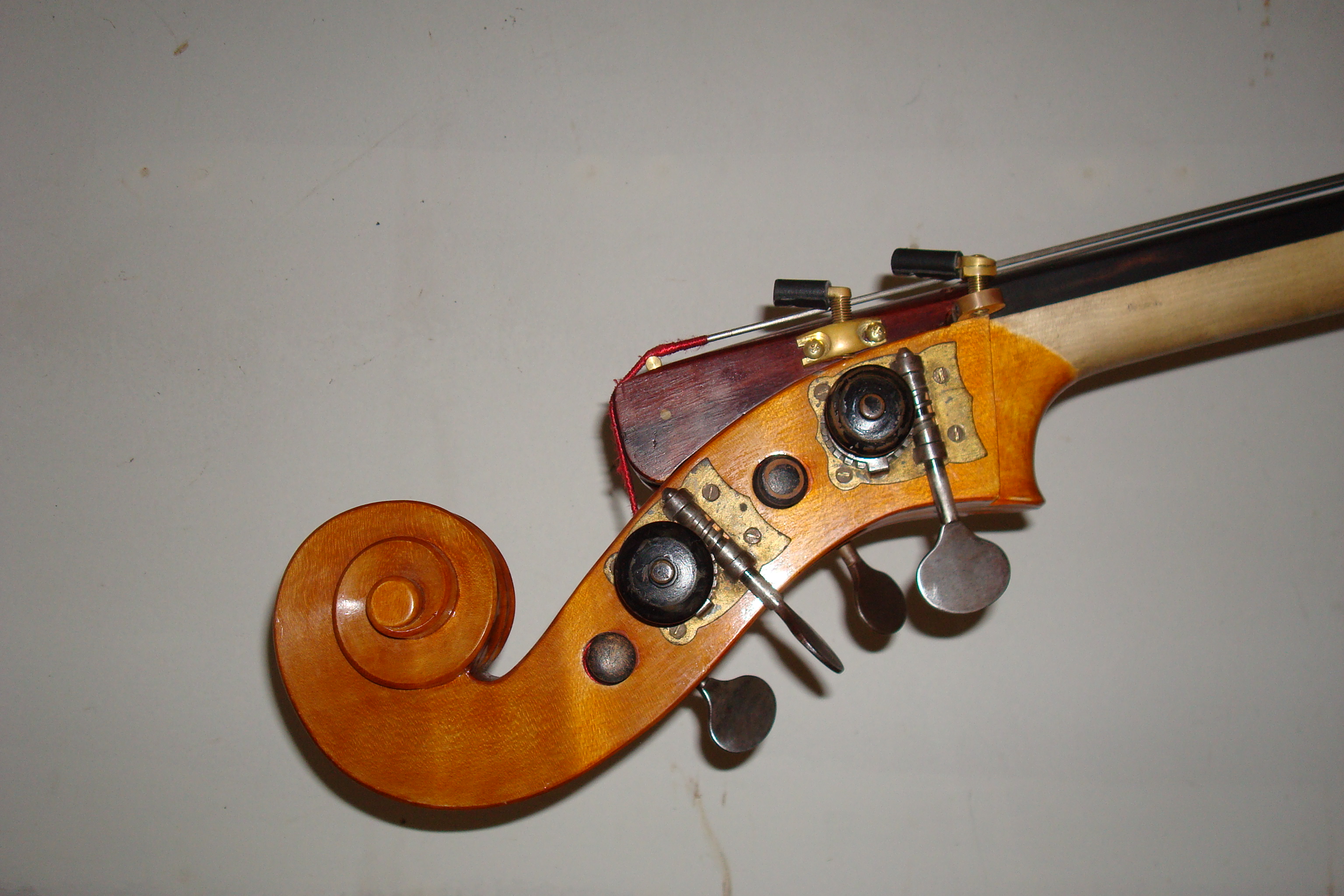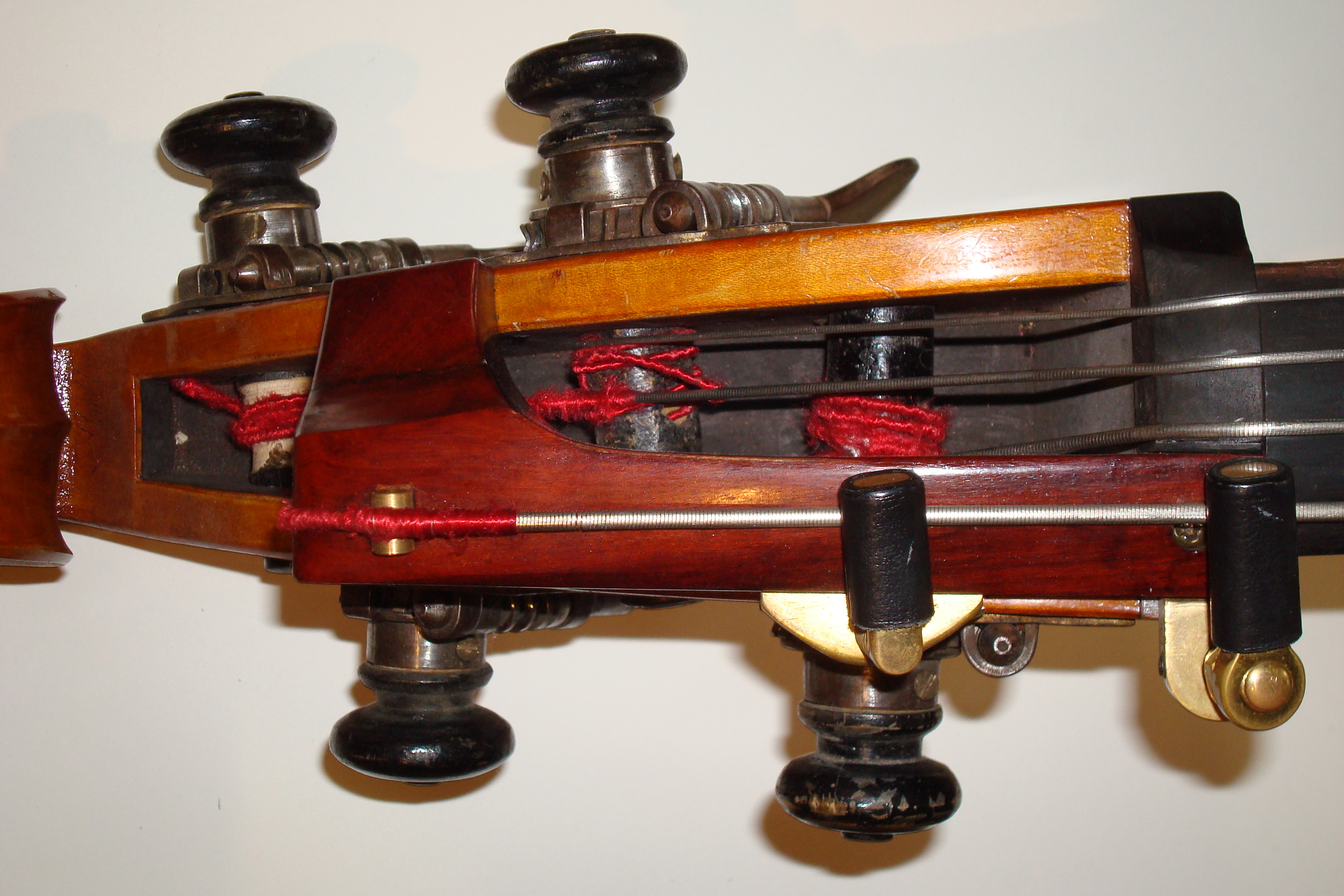C - Extensions
This is my version of William Merchant’s C–extension design. Below is a finished C–extension, complete with well aged maple or beech wood to match your neck wood (I have a good supply of both flamed and plain) and all three capos with E–stop. The capos and E–stop are hand made by Rob Anzellotti. You can contact him at basscapos@yahoo.com, or check out his web site for explanations and a listing of luthiers who sell and install his capos at www.basscapos.com.
D EXTENSIONS
Unlike my C-extension, for the D extension I use one solid piece of material, foregoing the ebony top laminant. The one you see here is made from a salvaged chunk of pernambucco, but it could be made of whatever hard wood you would like, ebony being the most popular. I’m also glad to match your bass’s scroll wood, color match your scroll varnish, and install an ebony laminant finger board for a bit of an up-charge.
Like the C-extension, my D-extension is also chalk fit to the scroll cheeks and I use the same technique of milling the underside of the nut to fit over the E stop tang. It's solid brass capos are hand made by Rob Anzelotti. All of the shaping of the sides and back I do free hand.
Benefits to having a D-extension:
1. ½ the price of a C-extension installation.
2. Uses a standard size E string. No added cost of purchasing a C string.
3. Makes the keys of D, G, A, Eb, Bb and Ab far more interesting in that you will have more low notes to choose from.
4. The installation is 100% non-invasive to the scroll. Meaning, no holes are drilled into the peg box or scroll to secure it.
5. Unlike the C-extension, the height of the string is only slightly higher off the fingerboard when the capos are opened to D. This is a big deal, especially for pizz players, in that the feel of the bottom string is not distractingly high or difficult to stop a note.






